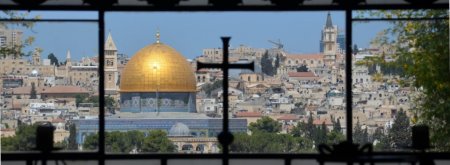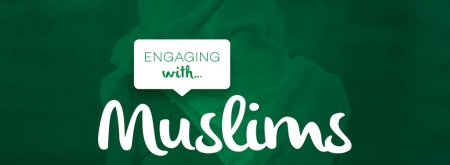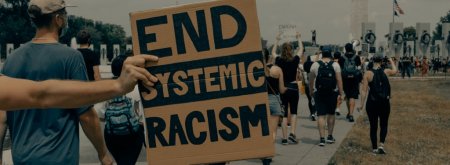What to say to Mormons
In the last chapter, we saw some of the problems Mormonism faces with the Book of Mormon and archaeology. In this chapter we will examine another book of the Mormon Scriptures called the Book of Abraham. The problems encountered here are devastating to the credibility of Mormonism.
Mormonism has four sources that they consider to be Scripture: the Bible, the Book of Mormon, the Pearl of Great Price, and Doctrine and Covenants. The Pearl of Great Price contains the Book of Moses, the Book of Abraham, and the Writings of Joseph Smith which include his translation of Matthew 23:39 through all of Chapter 24, and excerpts from History of the Church.
The Book of Abraham is of particular interest. In 1835, Smith purchased some mummies that were accompanied by ancient Egyptian papyri. Smith claimed to be able to translate the papyri because they were written in the same language as the Book of Mormon: “Reformed Egyptian.” As he translated the manuscripts, he claimed that part contained the Book of Abraham, a book written by Abraham himself.
1. There are problems with the Book of Abraham
The papyri for the Book of Abraham contained some drawings with Egyptian writing that were subsequently published in Times and Seasons, a Mormon newspaper. The papyri were lost after Smith’s death in 1844. In 1967 the papyri were rediscovered by the Metropolitan Museum of Art in New York who returned them to the Mormon Church which confirmed them to be the originals and published them for others to see. Dialogue: A Journal of Mormon Thought asked three prominent Egyptologists to translate the papyri. The Mormon Church had no need to fear. Since Joseph Smith was a true prophet, the contemporary translation would be very close to Smith’s. However, the stakes were high. The translations of the Egyptologists could either confirm Joseph Smith as a true prophet or convict him as a charlatan.
Furthermore, if Joseph Smith was terribly wrong in his translation of the Book of Abraham, it follows that he cannot be trusted to have produced an accurate translation of the Book of Mormon, which he himself claimed was in the same language.
John Wilson and Klaus Baer, both Professors of Egyptology at the University of Chicago, and Richard Parker, a Professor of Egyptology at Brown University, were asked to do the task. Here are the results:
John Wilson said that the text Smith used to translate the Book of Abraham was actually “a related mortuary text of late times, the so-called Book of the Breathings.” The Book of Breathings was an ancient Egyptian document, which was buried with the dead in order to provide guidance in the afterlife (which explains why Joseph Smith’s papyri were found among the mummies he had purchased). Wilson also claimed that one of the drawings Smith included in the Book of Abraham was actually a hypocephalus, “a cartonnage disk which was placed under the head of a mummy toward the end of ancient Egyptian history.”[32]
Klaus Baer said that the papyri that Smith thought was the Book of Abraham were actually “The Breathing Permit belonging to the priest Hor.”[33] This is another name given for the Book of Breathings.
Baer provided a comparison of his translation with Joseph Smith’s. It is quite easy to see that there is not the slightest resemblance between the two. For example ...
Baer’s translation: “the”
Smith’s translation: “... now this priest had offered upon this altar three virgins at one time who were the daughters of Onitah, one of the royal descent directly from the loins of Ham, these virgins were offered up because of their virtue they would not bow down to worship gods of wood or stone, therefore they were killed upon this altar”[34]
Richard Parker, likewise identifies Smith’s Book of Abraham papyri as the Book of Breathings.[35]
These results are absolutely devastating to Mormonism. Joseph Smith did not have the faintest idea of what he was doing while he was translating the papyri into the Book of Abraham. This certainly brings into question his ability to translate the gold plates into the Book of Mormon, since both the Book of Mormon and the Book of Abraham were in “Reformed Egyptian.”
2. Attempts by Mormons to answer the Book of Abraham problem fail
Mormon missionaries who come to your door will be stunned when you bring up the problem with the Book of Abraham. Some are completely unaware that such a problem exists. Others have heard of a “tension” but are unaware of its magnitude. Mormon scholars also have not had much success in their attempts to provide an explanation for the problem. Here are a few of the most common responses:
A. “We do not have the original papyri which Joseph Smith used for the Book of Abraham. They remain lost.”
Klaus Baer, however, has proven that we do have them in our possession today. (See Footnote 33). Furthermore, they are identical to reproductions that appeared in the Mormon newspaper, Times and Seasons. (See as examples, March 1, 1842 and May 16, 1842.)
B. “If you compare the Book of Abraham with other ancient writings about Abraham such as Jewish Midrash, the Genesis Apocryphon (found among the Dead Sea Scrolls), the Apocalypse of Abraham, the Testament of Abraham, and the Book of Enoch, you will find their stories agree on a number of points. This is remarkable because Joseph Smith would have had no way of knowing about these other Abrahamic writings in 1842. They either had not yet arrived in the United States or were still undiscovered. So Joseph Smith could not have made it up.”
Jewish Midrash includes stories that took parts of the Old Testament and attempted to make them relevant to a different time as well as provide solutions to questions unanswered in the Old Testament. Midrash began to be developed before the completion of the Old Testament and continued up until no later than the fifth century A.D.[36] While it is true that large volumes of Midrashim did not appear in print until the late nineteenth to early twentieth century,[37] for nearly two thousand years much Midrashim were orally transferred from one generation to another. Many were printed in little informal collections.[38]
The first Jews arrived in the colonies of the New World in 1654.[39] By 1655 the first Jewish congregation in the United States (Shearith Israel) had formed in Joseph Smith’s home state of New York.[40] Nearly two hundred years later, Smith was engaged in learning Hebrew. The Mormon Church hired a prominent Jewish professor, Joshua Seixas, to teach Smith and the Mormon high Elders.[41] Since Midrash existed in the United States during Smith’s day (unquestionably in oral form) and Smith lived relatively close to the nation’s first Jewish congregation, it is easy to see where Smith may have obtained his source. Miraculous knowledge on Smith’s part was not necessary.
What about these other writings? I have had Mormons tell me that there are ancient writings including one from the Dead Sea Scrolls that confirm the authenticity of the Book of Abraham because the stories are very similar. One prominent Mormon scholar claimed that the books mentioned above have many parallels to the Book of Abraham and, thus, confirm that Joseph Smith received the translation of the Book of Abraham through divine inspiration, because he could not have possibly known these accounts in his day. I must admit that his argument sounded pretty convincing — until I went to the library, obtained, and read copies of these writings.[42] Here are the “many,” “very similar” parallels:
1) The Book of Abraham and Genesis Apocryphon both speak of Abraham going to Egypt. However, the Bible does as well. So there is no uniqueness since Joseph Smith was well versed in the Bible.
2) The Book of Abraham, Apocalypse of Abraham, and the Testament of Abraham all speak of an attempt on Abraham’s life. However, the context in each rules out any parallel. In the Book of Abraham, a pagan priest attempts to sacrifice Abraham to the Egyptian gods in Abraham’s homeland. In the Apocalypse of Abraham, he fights with an evil spirit. In the Testament of Abraham, it is time for Abraham’s natural death. He refuses the requests of the archangel, Michael, to accompany him to Paradise.
3) The Book of Abraham and the Apocalypse of Abraham both speak of God’s promise to make a nation out of Abraham’s descendants. However, the Bible gives an account of this as well. So there is no uniqueness since Joseph Smith knew the Bible.
4) The Book of Abraham says that God instructed Abraham to lie to Pharaoh concerning his wife in order to save his own life in Egypt. The Genesis Apocryphon does provide perhaps our only true parallel. It says that Abraham had a parabolic dream (from God?) while in Egypt which encouraged him to lie concerning his wife in order to save his own life. The Biblespeaks of Abraham’s lie but says it was Abraham’s idea, not God’s. The Bible never records that God encourages lies. In fact, quite the opposite is true (1 Samuel 15:29; Psalm 5:6; 34:13; Proverbs 12:22; 30:8; Hebrews 6:18). Even other Mormon scriptures are emphatic against lying (Ether 3:12; D&C 10:28).
5) The Book of Abraham and the Book of Enoch both contain a divinely revealed account of creation. However, the stories are obviously not parallel accounts. In the Book of Abraham, God reveals the story of creation to Abraham. The Book of Enoch has an angel revealing the story to Enoch. The Book of Abraham refers to “the Gods” involved in creation. The Book of Enoch speaks of only one God. The creation account in the Book of Abraham has many parallels in the Bible and, therefore, is not unique. The creation account in the Book of Enoch is not at all like the biblical account.
Where are the parallels? One weak parallel is all we have. Therefore, the assertion that there are close parallels to the Book of Abraham in other ancient writings is a fabrication.
C. “Joseph Smith never attempted to translate the Book of Abraham by his own intellect. He did so by the power of God. The Egyptian papyri had nothing to do with it.”
Joseph Smith said, “I commenced the translation of some of the characters or hieroglyphics, and much to our joy found that one of the rolls contained the writings of Abraham ....”[43] When he identified the papyri as the Book of Abraham, he labored to translate it accurately.[44] He also put together an Egyptian grammar. Smith’s statements and actions make no sense if the Egyptian had nothing to do with his translation, since they implicitly claim the Egyptian had everything to do with his translation.
D. “We just do not know how Joseph Smith translated the Book of Abraham. It was apparently done by a process unknown to anyone but Joseph.”
While this may be a possibility, the Mormon should be honest with himself or herself and ask, “Does every problem in Mormonism need to be explained away by an unexplainable and unverifiable cause?” Certainly the Bible does not work that way. Is it possible that Mormonism is wrong?
I once asked two Mormon missionaries, “Is there anything which could show you that Mormonism is wrong?” They said they didn’t know. So I asked them, “I know this has never happened, but what if archaeologists began digging around Joseph Smith’s home and found some rusted plates with foreign engravings buried under the back porch? Let’s say they examined them and were able to date them to the 1830s. Let’s also say traces of gold paint were found on and around the plates that had since worn off. Would that cause you to question your faith?” They both agreed that it would. We then discussed the Book of Abraham problem. They were shocked. They were hardly aware such a problem existed! I assured them it was real and that Dr. Hugh Nibley, a chief defender of Mormonism, admitted of all the problems facing the credibility of Mormonism, “that’s the big one.”[45]
The two missionaries remained steadfast saying, “We will believe the Church over all findings to the contrary.” I asked them if they honestly believed that was a rational stance. “Would you want the folks you talk to on a daily basis, attempting to convince them of Mormonism’s truth, to adopt the same type of position that they will not change to Mormonism no matter what you show them? If everyone did that, you would quickly become unemployed.” I further pointed out that earlier they said such a problem would justify their questioning Mormonism and that if what I am sharing is true it would be healthy for them if they did.
The Book of Abraham problem is the death knell for Mormonism. In order to understand its significance, let’s say the bones of Jesus were found. One day archaeologists find a big box in Jerusalem during a dig. As they bring the box up and clean it off, there is writing on the box that says, “Jesus, son of Joseph the Carpenter, the one who was called the Christ.” As the archaeologists lift the lid off the box, there is silence as everyone zooms in on the skeleton of one who had been crucified. On top of the skeleton is a papyrus which says, “We fooled the world, until today,” and it’s signed, Matthew, Mark, Luke, John, etc.
Well, you might say, “That doesn’t prove anything. It could be a first century Jewish fraud.” And you would be right. It could be. But suppose we did a DNA test on the bones and compared the results with a similar DNA test from a blood stain on the Shroud of Turin – and they matched! Christian leaders were responding, “We have no answer. There’s definitely a match. It’s a mystery!” What would you do? The Apostle Paul said, “If Christ has not been raised ... your faith is worthless.”[46] The Bible says Jesus rose bodily and ascended into Heaven. But we have his bones. “Gosh, I thought it was true. I thought I had a relationship with Christ.” What would you do? What would you do? What the bones of Jesus would do to Christianity, the Book of Abraham does to Mormonism.
You can expect your Mormon visitors to be confused. But do not expect them to leave Mormonism that day. If it was claimed that the real bones of Jesus were discovered, would you give up Christianity on the spot? Probably not. You would investigate the story to make sure all of the facts were true. After all, many such stories have been proven to be sensational, embellished truths, or simply false. Your Mormon visitors will probably want to do the same. Encourage them to do so. Unfortunately, Mormon missionaries are not allowed to read any literature that has not been approved by the Mormon Church. However, they are allowed to listen to something that you read to them. So read parts of this chapter to them. Offer to show them anything they would like to see for themselves. Mormons who are not missionaries are permitted to read literature that has not been approved by the Mormon Church. Offer to give or loan a copy of this book to them. I have attempted to document every important point, so that anyone can check these things for himself or herself.
So far we have seen that, contrary to Mormon claims, the text of the Bible is trustworthy. We have also seen that the discipline of archaeology has been anything but friendly to the Book of Mormon. Finally, we have just observed that, at best, Joseph Smith was mistaken to believe that he had the ability to translate Reformed Egyptian and, therefore, render the Book of Mormon and the Book of Abraham as unreliable. At worst, he was a fraud. In other words, if Joseph Smith really believed he was given the gift to translate (from God) and that the Book of Mormon contains an historical account of real peoples, he was deceived. He was either self-deluded or the recipient of the tricks of the Devil. The other option is that Joseph Smith knew his claims to be able to translate the Book of Mormon and the Book of Abraham accurately were false. If this was the case, he was a deceiver. Deceived or deceiver? Either way, it seems pretty clear that Joseph Smith was not a Prophet of God.
Go to 5. Mormon evidences
References
[32] Dialogue: A Journal of Mormon Thought, Vol.III, No.2 (Stanford: Dialogue Foundation, 1968), p.68. To order back issues or request a subscription you may write to: Dialogue: A Journal of Mormon Thought, P.O. Box 658, Salt Lake City, UT 84110 or call (801) 363-9988.
[33] Dialogue: A Journal of Mormon Thought, Vol.III, No.3, p.111. In a footnote on the same page Baer said, “The identification is now certain. It was immediately evident the ‘Facsimile From the Book of Abraham No. 1' of the PGP [Pearl of Great Price] was copied from P. JS I. The interpretation proposed by Joseph Smith for the first two lines of text in P. JS XI corresponds to Abraham 1:4-2:6 .... The fact that the name of the owner is identical in both papyri, and that the left edge of the P. JS I appears to fit the right edge of P. JS XI (see n.15) – that is, that they are parts of the same scroll – confirm this.”
[34] Ibid., pp.130-132. The Book of Abraham reference is 1:11.
[35] Dialogue, Vol.III, No.2, p.86.
[36] Addison G. Wright, The Literary Genre Midrash (Staten Island: Alba House, 1967), p.51.
[37] See Louis Ginzberg’s monumental anthology, Legend of the Jews (Philadelphia: Jewish Publication Society).
[38] Dr. Mark Lee Raphael, Professor of Religion at the College of Willam and Mary in a personal telephone conversation, September 2, 1998.
[39] Margolis and Marx, A History Of The Jewish People (Philadelphia: The Jewish Publication Society Of America, 1927), p.603.
[40] Ibid., p.605.
[41] History of the Church, Vol.II, p.388. You may order History of the Church from any Mormon bookstore or call Mormon book dealer Deseret Bookstore, ZCMI Center, 36 S. State St., Salt Lake City, UT 84111, (800) 453-4532. In an article for Dialogue, Vol.III, No.2, Louis C. Zucker, Professor of English and Lecturer in Hebrew at the University of Utah said “... there is little doubt that Joshua Seixas was the ablest Hebraist ... in the 1830's” (p.45). Interestingly, Seixas was a relative of Gershom Mendez Seixas, the leader of Shearith Israel, the first Jewish congregation mentioned above.
[42] You can do this as well. See Michael Wise, Martin Abegg, Jr., & Edward Cook, The Dead Sea Scrolls (New York: Harper San Francisco, 1996). This is an English translation of all of the Dead Sea Scrolls available to date. The English translation of the Genesis Apocryphon is found on pp.74-84. For an Aramaic original with English translation including an informative introduction and commentary, see Joseph A. Fitzmyer, S.J., The Genesis Apocryphon of Qumran Cave 1 (Rome: Biblical Institute Press, 1971). R.H. Charles, The Book Of Enoch (New York: The Macmillan Co., 1942). Michael E. Stone, transl. The Testament Of Abraham. The Greek Recensions (Missoula: University of Montana, 1972). A short summary of the Apocalypse of Abraham with bibliography may be found in James H. Charlesworth, The Pseudepigrapha and Modern Research with a Supplement (Chico: Scholars Press, 1981).
[43] History of the Church, Vol.2, p.236. The introductory statement to the Book of Abraham is an excerpt from History of the Church, Vol.2, pp.235, 236, 348-351 and says, “A Translation of some ancient Records, that have fallen into our hands from the catacombs of Egypt. – The writings of Abraham while he was in Egypt, called the Book of Abraham, written by his own hand, upon papyrus.”
[44] History of the Church, vol.2, pp.238, 286, 320.
[45] Dr. Nibley in a personal telephone conversation with this author on August 19, 1997.
[46] 1 Corinthians 15:14, 17.
© 1998 Mike Licona
This article is reproduced from Mike Licona's book Behold, I Stand at the Door and Knock: What to say to Mormons and Jehovah’s Witnesses when they knock on your door. It is reproduced here by the kind permission of the author.



